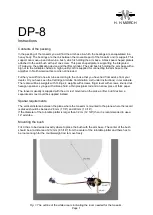
Chapter
2
1.3
Vision Risk Factors
Sustained viewing of screens can lead to fatigue, blurred or double vision, and headaches.
Some researchers believe that users who look at their screens for long durations can even undergo
changes in how clearly and quickly they focus.
1.3.1
Things to Keep in Mind
•
Maintain a desirable viewing angle of 20 to 35 degrees downward toward the center of the
LCD screen.
•
Place the display at a comfortable viewing distance, usually about 20 to 24 inches away from
you.
•
Periodically adjust the product during the work session to change the focal distance to the
LCD.
•
Always locate the LCD directly in front of you.
•
Always adjust the brightness and contrast controls to maximize the character and image
quality on the LCD.
•
Take frequent, short stretching or exercise breaks.
•
Frequently adjust your position in your chair.
•
Select light sources that are located outside the peripheral field of vision in order to minimize
direct and reflected glare.
•
Whenever possible, use indirect lighting to avoid reflective bright spots on the LCD.
1.4
Hand and Wrist Motor Risk Factors
Using the keyboard, using the mouse, using the touch panel, writing, and grasping and handling
paperwork might cause strain on the hand’s fine motor functions and could lead to pain, swelling,
and numbness that persists in the affected area, even when at rest.
1.4.1
Things to Keep in Mind
•
Avoid sustained repetition of tasks without taking breaks. Take frequent breaks throughout
the operating session, and perform stretching exercises.
•
Avoid sitting in one position for long periods of time.
•
Be aware that working in an awkward position could cause discomfort or stress to the back,
neck, or shoulders.
•
Periodically stretch, change your posture, and alternate between sitting and standing.
•
When typing or tapping, ensure a neutral or straight wrist position by aligning the chair,
work surface, and the product.
1









































